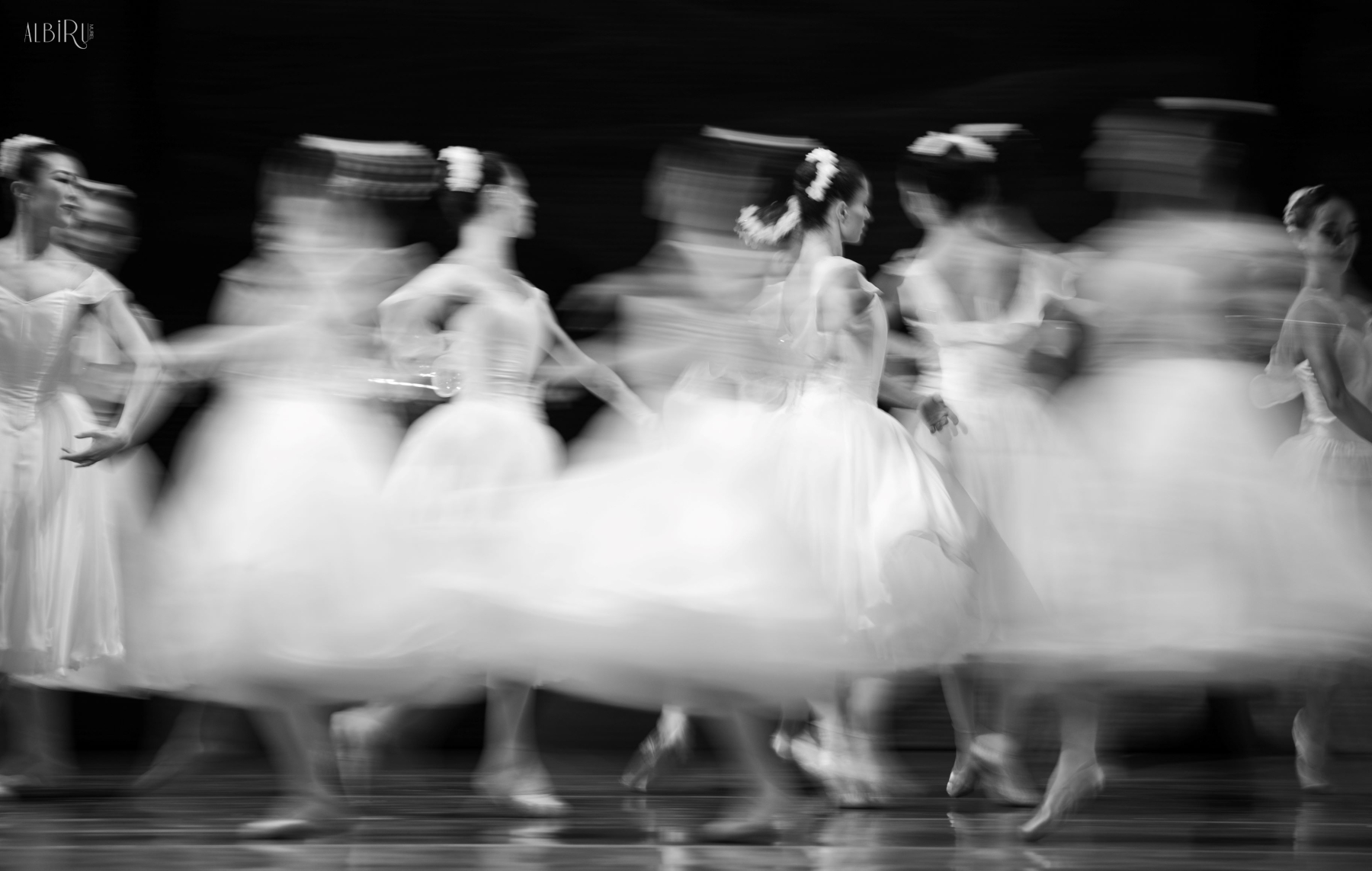Repertoire
The Sylphide
La Sylphide, original ballet in two acts by Filippo Taglioni (1777-1871) was premiered on March 12, 1832 at the former Paris Opera Le Pelletier on a score by Jean Schneitzhoeffer and libretto by Adolphe Nourrit. This ballet inspired the version of the same name made by August Bournonville (1805-1879) on November 28, 1836, with music by Herman S. Løvenskiold; Bournonville, who had attended the performance of the work in Paris 4 years earlier, bought that day the booklet with Nourrit's libretto, which he would use without modifications, resulting in two works with identical dramaturgy coexisting for a while in the European billboards.
The Paris Sylphide did not survive, as did an earlier one performed at the Teatro della Scala in Milan in 1822 with music by Rossini. However, the version of the choreographer August Bournonville, with music by Herman S. Løvenskiold becomes the oldest ballet of the romantic period preserved in the international active repertoire with greater choreographic fidelity.
The ballet La Sylphide, initiator of the current of works on the elemental spirits and great metaphor of frustrated loves, was the first great ballet that became popular in Madrid, with multiple stagings and versions, coming to be represented from 1842 alternately in two theaters of the capital: the Teatro del Príncipe and the Teatro del Circo.
Bournonville, with the help of two local painters, reproduced in detail at the Royal Theater in Copenhagen the original Parisian designs of Pierre Ciceri (scenery) and Eugène Lami (costumes), designs that literally inspire even today's productions of the ballet.
- Absolute premiere: by the Royal Danish Ballet, in the Royal Danish Theater, Copenhague (Denmark), on November 28, 1836
- Premiere by the Compañía Nacional de Danza: in the Teatro de la Zarzuela, Madrid (Spain), on December 7, 2023

A DELICATE ROMANTIC CELEBRATION
Each character or theatrical character will always have its details and elements to sneak into our innermost feelings, as the sylph does when she enters through the window and turns upside down what is happening in Effie’s house (the preparation of the wedding between her and good old James) without caring too much about the consequences. Despite this and her carefree, whimsical and sometimes dramatic character, she always arouses our sympathy. This is precisely one of the keys of this singular character destined to remain in that eternal state of grace that distinguishes and draws him. The dancer must interpret all these nuances that are within the environmental fantasy that the libretto calls for and that must be made credible to the audience.
Although at times the tone of this ballet may seem festive, we must never lose sight of the fact that we are in Romanticism and that, underneath the action runs a drama that ends in the worst possible way. It can be interpreted that the sylph is a victim of her actions, her impulsiveness and her bad head. But there is something else that can also be a lesson: in her infatuated enthusiasm, she drags James into unhappiness and despair.
When talking about excellence in dancing perhaps the most important thing is that the technique we use is not noticeable, that it is contained in the dance, ordering the steps and making them a musical whole, but that the purely physical efforts are not evident. The sylph is the character of the great ballet repertoire that most demands this purpose. Technique is not an end, but a tool that allows us to interpret and tell a story, and the sylph passes before our eyes as something evanescent, light, almost incorporeal, and it is there that the dancer must give all of herself. There are no great displays of what is understood as virtuosity in Bournonville’s ballet. Everything is much more subtle and delicate, and that is part of the great challenge.
This great celebration of romantic ballet is an occasion that should fill us all with pride. The CND returns to an immortal title demonstrating versatility and talent with its staff.
Arantxa Argüelles
Información
-
Choreography:August Bournonville
-
Music:Herman Severin Lovenskjold
-
Screenplay:Adolphe Nourrit (transcribed by August Bournonville in 1836)
-
Staging:Petrusjka Broholm
-
Scenography Design:Elisa Sanz
-
Costume Design:Tania Bakunova
-
Lighting Design:Nicolás Fischtel
-
Scenography Creation:Proescen
-
Costumes Made By:D’Inzillo Sweet Mode
-
Running time:90 minutes
-
Premiere cast CND:La Sílfide: Yaman Kelemet; James: Thomas Giugovaz; Effie: Martina Giuffrida; Madge: Irene Ureña; Gurn: Jorge Palacios; Anna: Eva Pérez; Jack A: Juan José Carazo; Jack B: Erez Ilan; Nancy: Shani Peretz; Escocesas: Natalia Butragueño, Celia Dávila, Tamara Juárez, Sara Khatiboun, Mariavittoria Muscettola, Ayuka Nitta, Laura Pérez Hierro, Samantha Vottari, Kana Yamaguchi; Escoceses: Niccolò Balossini, José Alberto Becerra, Théo Bourg, Eduardo Díez de Jesús, Daniel Lozano, Shlomi Shlomo Miara, Iván Sánchez, Roberto Sánchez; Sílfides: Natalia Butragueño, Celia Dávila, Sara Khatiboun, Akane Kogure, Clara Maroto, Mariavittoria Muscettola, Ayuka Nitta, Daniella Oropesa, Shani Peretz, Ana Pérez-Nievas, Laura Pérez Hierro, Pauline Perraut, Samantha Vottari, Kana Yamaguchi; Brujas: Niccolò Balossini, José Alberto Becerra, Théo Bourg, Eduardo Díez de Jesús; Cortejo nupcial: Tamara Juárez, Shlomi Shlomo Miara, Roberto Sánchez












